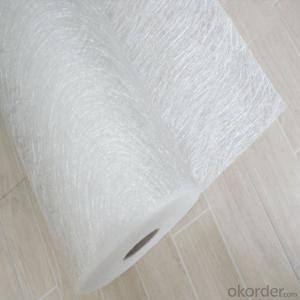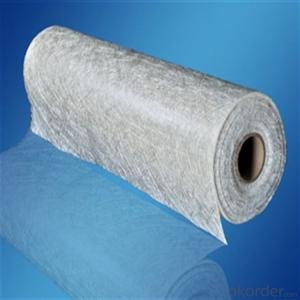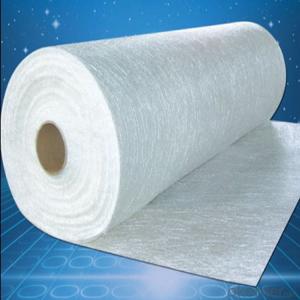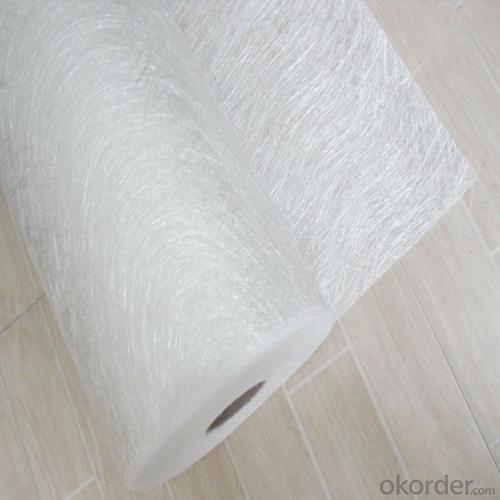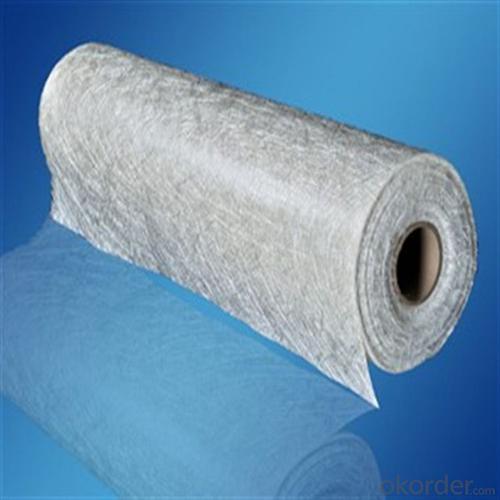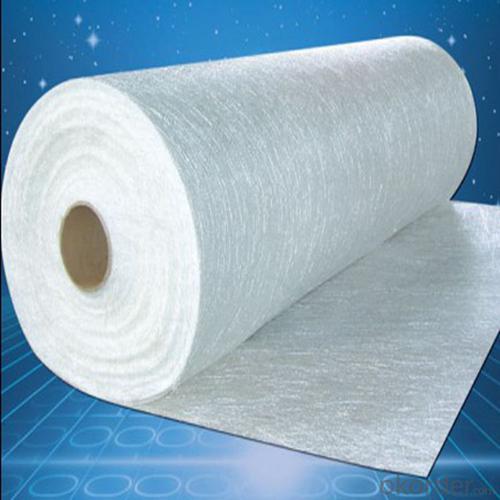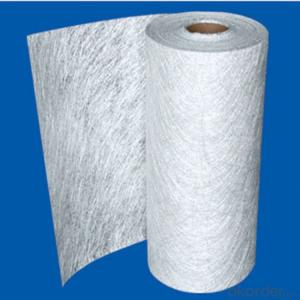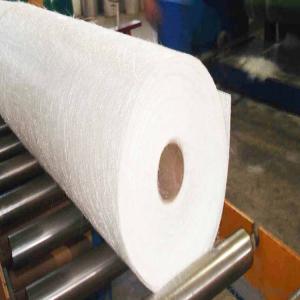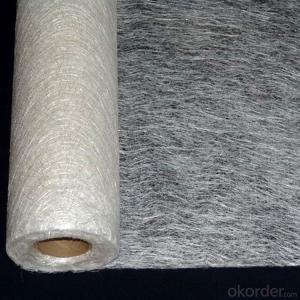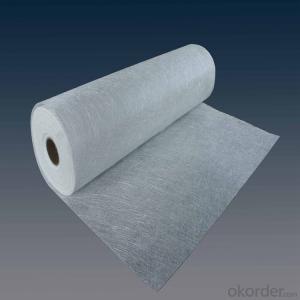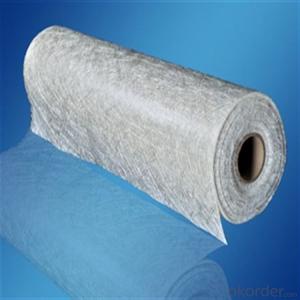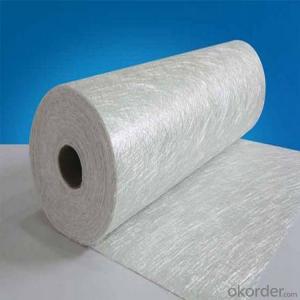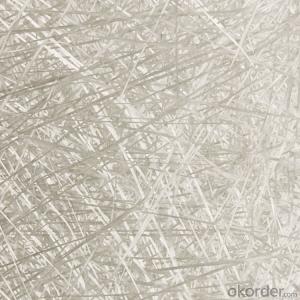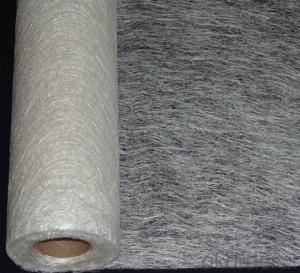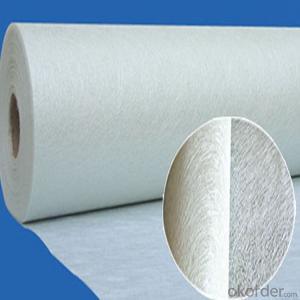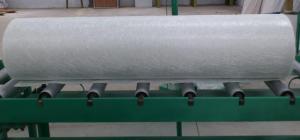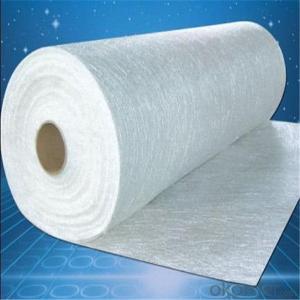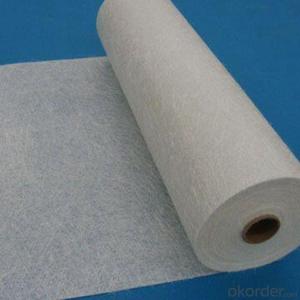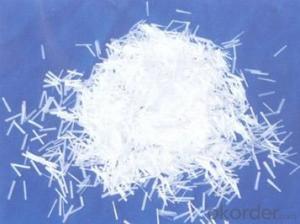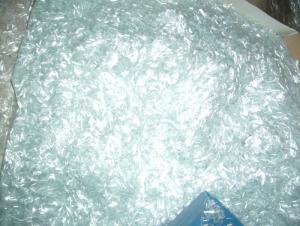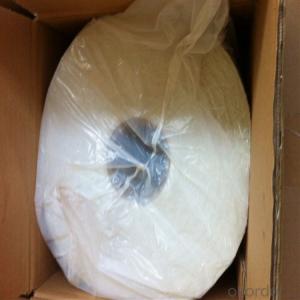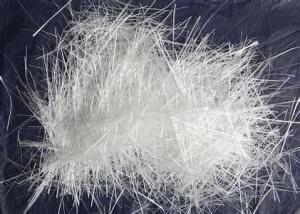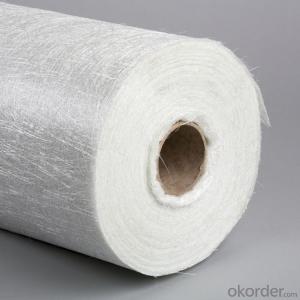Fiberglass Strands Chopped 450gsm Powder Fiberglass Chopped Strand Mat C Glass
- Loading Port:
- China main port
- Payment Terms:
- TT OR LC
- Min Order Qty:
- 1 kg
- Supply Capability:
- 5000 kg/month
OKorder Service Pledge
OKorder Financial Service
You Might Also Like
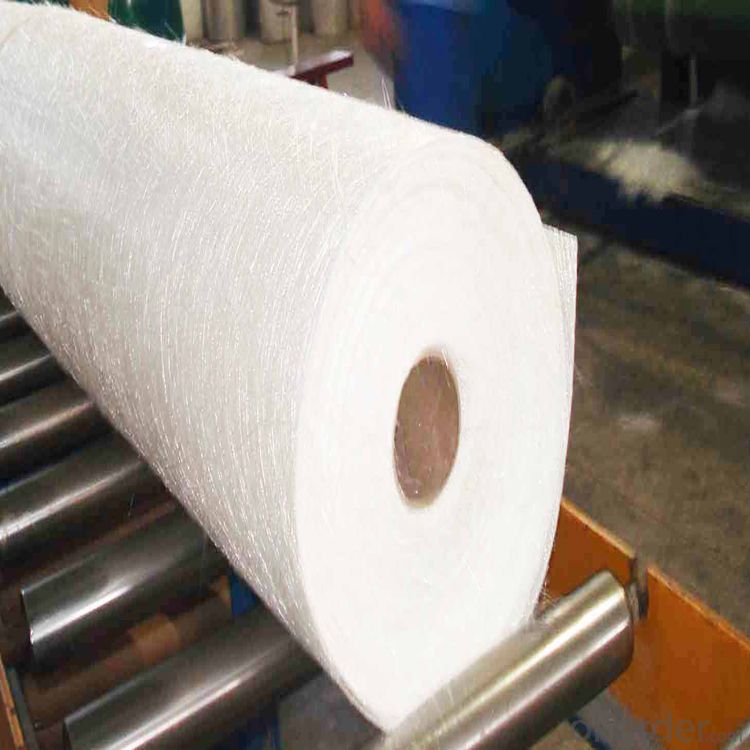
Product Description:
Chopped strand mat is made from chopped glass fibers, which are bonded with powder or emulsion binders. It can be used in hand lay-up process and continuous laminating process to produce FRP products, such as plates, lighting board, hull, bathtub, cooling towers, anti-corrosion materials, vehicles.
Features:
Uniform thickness, softness and hardness good.
Good compatibility with resin, easy completely wet-out.
Fast and consistent wet-out speed in resins and good manufacturability.
Good mechanical properties, easy cutting.
Good cover mold, suitable for modeling complex shapes.
Application:
fiberglass thickness is suitable for application by hand lay-up, reinforce and machine FRP molding,
including interior decoration of vehicles, boat hulls, complete set of sanitary equipment, anticorrosive pipes, tanks, building materials, tables, chairs, panels and all kind of composite FRP products.
Specifications:
Item | Over Density | Moisture Content | Chop Density | Polyester Yarn | Width |
(g/m2) | (%) | (g/m2) | (g/m2) | (mm) | |
EMK300 | 309.5 | ≤0.15 | 300 | 9.5 | 50-3300 |
EMK380 | 399 | 380 | 19 | ||
EMK450 | 459.5 | 450 | 9.5 | ||
EMK450 | 469 | 450 | 19 | ||
EMC0020 | 620.9 | 601.9 | 19 | ||
EMC0030 | 909.5 | 900 | 9.5 |
Special products are available according to customer’s requirement.
Product Packaging:
Each Surface Tissue is wound onto a paper tube which has an inside diameter of 76mm and the mat roll has a diameter of 330mm. The mat roll is wrapped up with plastic film,and then packed in a cardboard box or wrapped up with kraft paper. The rolls can be vertically or horizontally placed. For transportation, the rolls can be loaded into a cantainer directly or on pallets.
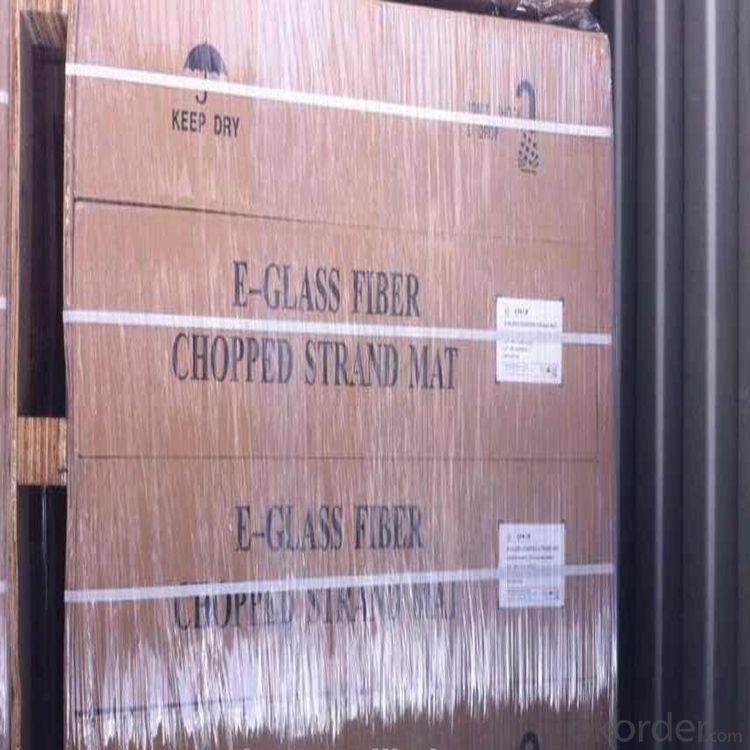
Product Storage:
Unless otherwise specified, Chopped Strand Mat should be stored in a dry, cool and rain-proof area. It is recommended that the room temperature and humidity should be always maintained at 15℃~35℃ and 50%~75% respectively.
Company Information
CNBM (China National Building Material) Group is the largest comprehensive building materials group in China that in integrate scientific research, manufacturing and logistics into one entity. The largest building materials and equipment specialists in China. Upon State Council approval, today CNBM owned more than 300 subordinate manufacturing factories and servicing companies. There are 6 fully owned public listed companies and 11 partially owned with substantial shares public listed companies. In many of these fields, CNBM is playing the leading role in the building industry in the country.
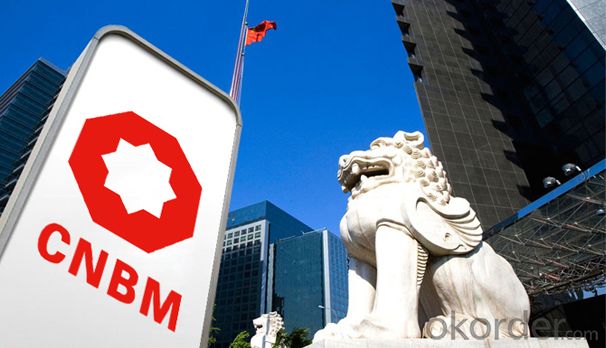
Order Information
Ordering please specify:
1. the product code, 2. weight, 3. width, 4. order quantity, 5. packaging, 6. special requirements please specify.
FAQ:
1. How long will you get reply?
Any inquiry will be replied within 24 hours. Usually we will reply within 12 hours.
2. How long is warranty period?
We provide 3 year warranty period.
3. What is your MOQ?
Any order quantity is available.
4. Can you provide sample?
Yes, samples are in stock. we can offer free sample for you.
5. Payment terms?
We can accept L/C, T/T, Western Union, Paypal etc.
6. Do you offer OEM service?
Yes, we can print customers’ logo on the packaging;
And the size and specification can be produced and design according to your demand.
7. What is the Production Lead Time?
15-20 days for bulk production after confirm the order.
- Q: Is fiberglass chopped strand suitable for the production of water slides?
- Fiberglass chopped strand, indeed, proves to be a fitting material for the production of water slides. Widely used in the manufacturing of such slides, fiberglass stands out as a versatile and durable substance. Its commendable attributes include a high strength-to-weight ratio, resistance to corrosion, and the ability to withstand harsh weather conditions. Specifically engineered for reinforcement purposes, fiberglass chopped strand emerges as an optimal selection for crafting robust and enduring water slides that can endure constant exposure to water, UV rays, and the inevitable wear and tear associated with regular usage. Moreover, fiberglass possesses the capability to be molded into diverse shapes and sizes, thus enabling the creation of intricate and personalized designs for water slides. As a whole, fiberglass chopped strand encompasses the essential properties and performance necessary for the production of water slides, rendering it an apt choice for this particular application.
- Q: Can fiberglass chopped strand be used in filtration applications?
- Yes, fiberglass chopped strand can be used in filtration applications. It is commonly used as a filtration media due to its high strength, chemical resistance, and ability to capture and retain solid particles in various filtration processes.
- Q: How does the manufacturing process of fiberglass chopped strand impact its quality?
- The manufacturing process of fiberglass chopped strand has a significant impact on its quality. The process involves several crucial steps such as the selection of raw materials, the cutting of continuous glass fibers into shorter lengths, and the application of a sizing agent. These steps ensure that the chopped strand is of the desired thickness, length, and composition, which ultimately affects its strength, durability, and overall performance. Additionally, the manufacturing process also plays a role in eliminating any impurities and defects that could compromise the quality of the final product. Therefore, a careful and well-executed manufacturing process is essential to produce high-quality fiberglass chopped strand.
- Q: Can fiberglass chopped strand be recycled?
- Yes, fiberglass chopped strand can be recycled. Fiberglass is a highly recyclable material that can be melted down and reformed into new products. The recycling process involves breaking down the chopped strand into smaller pieces, separating it from any other materials or contaminants, and then melting it to create new fiberglass products. Recycling fiberglass helps to reduce waste and conserve resources, making it an environmentally-friendly option.
- Q: Does fiberglass chopped strand improve the weathering resistance of composite materials?
- Composite materials benefit from the use of fiberglass chopped strand, as it enhances their ability to resist weathering. Fiberglass is well-known for its exceptional weathering properties, making it a popular choice for reinforcing composite materials. Chopped strand fiberglass, which consists of small, randomly chopped fibers mixed with a resin matrix, is particularly effective in creating a durable composite material. The inclusion of fiberglass chopped strand in composite materials improves their weathering resistance in multiple ways. Firstly, the fiberglass fibers possess a high resistance to UV radiation, a significant contributor to weathering. These fibers act as a protective barrier, absorbing and dispersing UV rays, thereby preventing damage to the underlying resin matrix. This feature ensures the composite material's structural integrity and appearance are maintained over time. Secondly, fiberglass chopped strand reinforces the composite material, resulting in increased strength and stiffness. This reinforcement enables the composite material to withstand the mechanical stresses associated with weathering, including wind, temperature fluctuations, and exposure to moisture. By enhancing the overall strength of the composite, fiberglass chopped strand helps prevent cracking, warping, and other forms of degradation caused by weathering. Furthermore, fiberglass chopped strand improves the dimensional stability of composite materials. It minimizes dimensional changes caused by variations in temperature, reducing the risk of warping or distortion. This characteristic is particularly valuable in outdoor applications, where composite materials are exposed to a wide range of weather conditions. In conclusion, the addition of fiberglass chopped strand significantly enhances the weathering resistance of composite materials. The high UV resistance, reinforcement, and dimensional stability provided by fiberglass chopped strand enable composite materials to withstand the detrimental effects of weathering, ensuring long-term performance and durability.
- Q: Is fiberglass chopped strand suitable for automotive interior panels?
- Automotive interior panels can indeed be made from fiberglass chopped strand. This material is comprised of short strands of glass fibers that are dispersed randomly and bonded together. It possesses a lightweight and strong nature, along with excellent dimensional stability, making it an ideal option for such panels. Choosing fiberglass chopped strand ensures an outstanding strength-to-weight ratio, which is vital for panels to endure daily wear and tear while keeping the vehicle's weight in check. Moreover, this material exhibits good resistance to chemicals, heat, and impact, further enhancing its appropriateness for automotive applications. Its versatility permits easy molding and shaping into intricate panel designs, guaranteeing a perfect fit for automobile interiors. All in all, fiberglass chopped strand is a dependable and durable material that fulfills the specific requirements of automotive interior panels.
- Q: How does the handling method of fiberglass chopped strand affect its performance?
- The handling method of fiberglass chopped strand can significantly affect its performance. The handling method refers to how the chopped strands are processed, packaged, and stored before use. Improper handling can lead to several issues. Firstly, it can result in strands being damaged or broken, which can negatively impact the strength and integrity of the final fiberglass product. Damaged strands may not fully bond with the resin matrix, leading to weaker mechanical properties such as tensile strength and impact resistance. Secondly, inadequate handling can cause the chopped strands to become contaminated with foreign particles or moisture. Contaminants can interfere with the resin impregnation process and reduce the bonding capability of the fiberglass. Moisture, on the other hand, can cause microcracks within the strands, leading to reduced overall strength and dimensional stability. Furthermore, the handling method also affects the dispersion of the chopped strands within the resin matrix. Properly handled strands will have a more uniform distribution, leading to improved load transfer and enhanced mechanical properties. In contrast, poorly handled strands may clump together, resulting in uneven reinforcement and potential weak spots in the final product. To ensure optimal performance, it is crucial to follow recommended handling practices for fiberglass chopped strand. This includes storing the strands in a clean and dry environment, protecting them from exposure to moisture or other contaminants. Additionally, careful transportation, packaging, and processing techniques should be employed to prevent any damage to the strands. By adhering to proper handling methods, manufacturers can maximize the performance of fiberglass chopped strand and ensure the production of high-quality fiberglass products with superior mechanical properties and reliability.
- Q: How does the fiber diameter affect the surface finish of fiberglass chopped strand composites?
- The fiber diameter of fiberglass chopped strand composites directly affects the surface finish. Smaller fiber diameters tend to result in a smoother surface finish, as they allow for better resin distribution and reduced fiber protrusion. On the other hand, larger fiber diameters can lead to a rougher surface finish, with more visible fibers and potential for fiber pullout.
- Q: Can fiberglass chopped strand be used in the production of lightweight panels?
- Yes, fiberglass chopped strand can be used in the production of lightweight panels. Fiberglass chopped strand is a type of reinforcement material that is made up of small strands of glass fibers. These fibers are typically chopped into short lengths and are then mixed with a resin matrix to create a composite material. The use of fiberglass chopped strand in the production of lightweight panels offers several advantages. Firstly, fiberglass is known for its high strength-to-weight ratio, which means that it provides excellent structural integrity while keeping the weight of the panels to a minimum. This is particularly beneficial for applications where weight reduction is crucial, such as in the automotive or aerospace industries. Additionally, fiberglass chopped strand can be easily molded into complex shapes, allowing for the production of panels with intricate designs. This flexibility in shaping also makes it possible to create panels that are tailored to specific requirements, such as being able to withstand high temperatures or resist corrosion. Moreover, fiberglass chopped strand is a cost-effective option compared to other reinforcement materials, making it a popular choice for lightweight panel production. It is readily available, and its production process is relatively simple, allowing for efficient mass production. In conclusion, fiberglass chopped strand can definitely be used in the production of lightweight panels. Its high strength-to-weight ratio, versatility in shaping, cost-effectiveness, and availability make it a suitable material for various industries requiring lightweight yet durable panels.
- Q: Is fiberglass chopped strand resistant to moisture?
- Yes, fiberglass chopped strand is resistant to moisture. The individual strands of fiberglass are coated with a special resin that repels water and prevents moisture absorption. This makes fiberglass chopped strand a highly suitable material for applications where moisture resistance is required, such as in the manufacturing of boat hulls, swimming pools, and bathroom fixtures. Additionally, the moisture resistance of fiberglass chopped strand helps to prevent the growth of mold and mildew, making it a durable and long-lasting option for various industries.
Send your message to us
Fiberglass Strands Chopped 450gsm Powder Fiberglass Chopped Strand Mat C Glass
- Loading Port:
- China main port
- Payment Terms:
- TT OR LC
- Min Order Qty:
- 1 kg
- Supply Capability:
- 5000 kg/month
OKorder Service Pledge
OKorder Financial Service
Similar products
Hot products
Hot Searches
Related keywords
